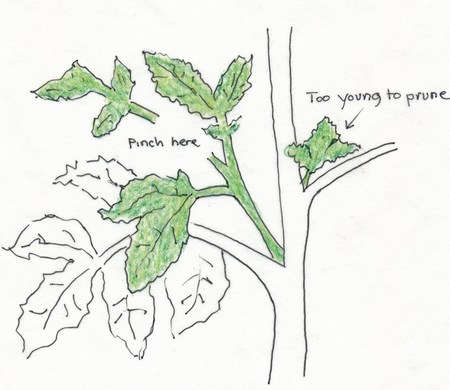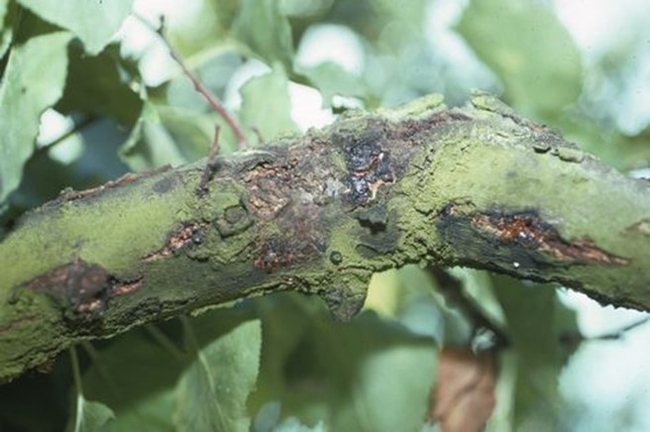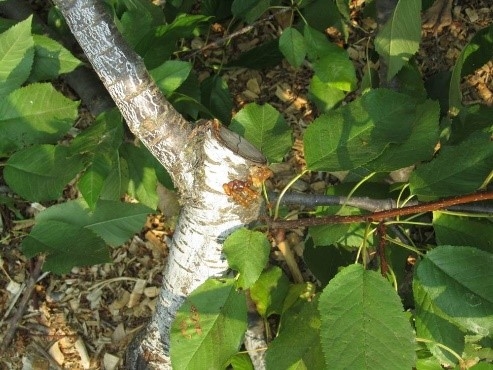- Author: Help Desk Team
The answer is YES! And it is easy!
If you prune, your rose flower bushes will
• Be larger
• Have more flowers
• Will be more balanced and fuller
• And the health of your plant improved!
Most roses need to be pruned only once a year. All types of rose bushes benefit from pruning and if roses are not pruned regularly, they deteriorate in appearance and flowers will become smaller.
When to Prune?
Most roses should be pruned when they are dormant. In this area of California, roses are generally dormant between December and February and anytime in that time frame is fine.
Objective
The pruning objective is to work toward an open, airy, well-shaped and balanced V-shape cane structure.
What you will need
• A pair of sharp, clean pruning shears
• A pair of clean long-handled lopping shears
• Thick gauntlet gloves to protect your hands from the thorns
• A small hand saw for larger cuts
• Alcohol and a cloth for cleaning your tools
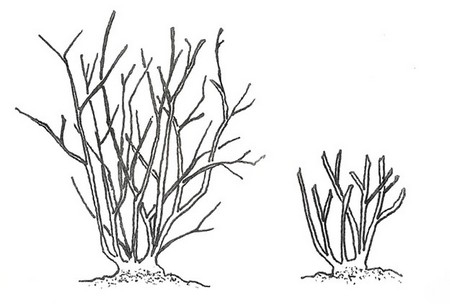
How to approach the task
These pruning practices pertain to all garden roses regardless of type:
• Use your loppers to cut off the top one third to one half of the plant to better see its structure.
• Clear the area underneath the plant from all leaf and other organic debris to expose the crown/canes and sucker origins.
• Make your pruning cuts with your shears at a 45 degree angle about 1⁄4” above an outward facing bud. The angle should slope away from the bud. A cut made at this point will heal rapidly and water will drain away from the bud.
• Remove all dead, broken or damaged canes down to the crown.
• Undesirable canes have discolored pith or hollow centers indicating disease, insect or weather damage.
• Remove any crossing canes keeping the best looking ones.
• Remove spindly canes (smaller in diameter than the size of a pencil).
• Remove any suckers. These are extra vigorous shoots arising from rootstock below the bud union.
• Suckers should be removed completely, not just clipped off where they emerge from the soil. This can be done by moving the soil away from the trunk until you can see where the sucker is connected to the trunk. Grab ahold of the sucker close to the trunk and pull downward to break it off.
• Choose 3–6 strong, healthy, outside canes per plant to keep and leave 3–5 buds on each cane.
• Remove EVERY leaf from the newly pruned bush as diseases and insects tend to over winter in old leaves.
• Consider applying an insecticidal soap or horticultural oil after pruning and while roses are dormant. Soaps and oils smother overwintering scales and insect eggs and are least harmful to beneficial insects. A good time to apply is when no rain or fog is expected within a day.
• Shape your rose bushes as they grow. Keep the branches balanced and the centers open for airflow.
General pruning techniques for various types of roses
Hybrid Tea, Grandiflora, and Floribundas Roses
• Cut back between one third and one half of the previous year's growth on all the canes you plan to keep (4 to 7 canes). The average pruning height for Floribundas and Hybrid Teas is between 12 and 18 inches, but taller growing Hybrids and most Grandifloras may be left at 2 feet. For most hybrids this means leaving between 5 to 10 buds per cane.
Miniatures Roses
• Miniature roses are 6 to 12 inches high, with tiny blooms and foliage. Miniature roses do not need special pruning. Just cut out dead growth and remove the hips.
Rambler Roses
• Old-fashioned Rambler roses have clusters of flowers, each usually less than 2 inches across. They often produce canes 10 to 15 feet long in one season. Rambler roses produce best on one-year-old wood, so this year's choice blooms will come on last year's growth. Prune immediately after flowering. Remove some of the large old canes. Tie new canes to a support for the next year.
Climbing Roses
• Large-flowering climbing roses have flowers more than 2 inches across, borne on wood that is 2 or more years old. Canes are larger and sturdier than those of Ramblers. Many flower just once in June, but some, called ever-blooming climbers, flower more or less continuously. Often this group is pruned in the autumn, any time before cold weather sets in. First cut out dead and diseased canes. After this, remove 1 or 2 of the oldest canes each season to make room for the new canes. The laterals, or side shoots, are shortened 3 to 6 inches after flowering. If the plant is strong, keep 5 to 8 main canes, which should be tied to the trellis, fence, wall, or other support. If it is not strong, leave fewer canes.
Link for rose pruning video: https://ucanr.edu/blogs/blogcore/postdetail.cfm?postnum=16947
See this UCIPM site for more information on rose care:
https://ipm.ucanr.edu/PMG/GARDEN/PLANTS/rose.html
Help Desk of UC Master Gardener Program of Contra Costa County (PDS)
- Author: Help Desk Team
When I first started growing tomatoes, I was reluctant and nervous about pruning my tomato plants for fear I would be doing it incorrectly. After 9 years of growing, I have learned that it is one of the best practices to include in your plant care. It is easy to do and produces better tasting and bigger tomatoes because you are helping focus the energy of the plant.
Here are a few simple tips for pruning your indeterminate tomato plants (determinate plants do not need to be pruned):
Removing suckers
- Suckers are the stems/leaves that grow out of the “V” junctions on plants. They grow fast and keep growing all season. These are best snipped off when they are small.
- Pinching can work as well but make sure you don't tear the tender stems. Before removing suckers wait until at least 2 leaves develop and pinch/snip just above that point.
Establishing the leader
- The leader is the main stem of the plant which starts near the ground.
- You may choose to allow additional leaders (or stems) to grow as well. There are advantages for each.
- Plants with two or more stems produce more tomatoes and greater/denser foliage which protects the plants from the sun. Tomatoes can sun burn!
- While the denser leaf canopy may reduce the incidence of black mold and cracking, it may also increase the incidence of other fruit molds such as gray mold.
- Plants with only one leader will bear fruit sooner but will ultimately produce a smaller total crop and may increase the incidence of some diseases due to the lighter foliage.
Topping your plants
- Pruning the top of your tomato plants once they have reached a desired height (usually about 5–6 feet) is perfectly acceptable and will push the energy down into the development of the fruit below.
- I find I need to continually do this all summer.
“Good to know” tips
- DO NOT Prune your plants when they are wet as this could spread diseases.
- DO prune off any bottom branches that are touching the ground as they can provide a direct vector for soil borne diseases to move onto the plant.
- DO prune off any yellowed or discolored leaves later in the season to keep the energy focused on the fruit.
- DO keep your nippers sharp and clean to avoid damaging your plants.
Below is a link to more information about growing and pruning tomatoes from the UC Master Gardener site:
Help Desk of the UC Master Gardeners of Contra Costa County (PDS)
- Author: Help Desk Team
Prune Apricot and Cherry Trees in August
If you have apricot, cherry, or related hybrid tree varieties such as aprium and pluot in your yard, plan to prune them before the end of August. This timing will help prevent infection by a deadly fungal disease called Eutypa Dieback that can kill these trees as well as grape vines.
When infected by Eutypa, branches or entire trees wilt and die suddenly, often with the leaves still attached.
Apricot tree with branch killed by Eutypa
Signs that your tree may be infected by Eutypa include darkly discolored cankers on the branches and oozing of amber colored gummy sap.
Eutypa cankers on apricot branch
Oozing Sap on Cherry Tree from Eutypa Infection
[Editorial Note: apricot photos downloaded from UC Repository. Cherry tree photocopied from UC ANR blog article by Chuck Ingels, UCCE Sacramento, https://ucanr.edu/blogs/blogcore/postdetail.cfm?postnum=16014 ]
Many other varieties of trees and shrubs can become infected with the Eutypa fungus without showing disease symptoms or progressing to the dieback stage. These other tree and shrub varieties can serve as store houses for the Eutypa pathogens that could potentially spread to your grape vines and apricot, cherry, aprium and pluot trees. Trees and shrubs that can serve as reservoirs for the disease include almond, apple, blueberry, crabapple, honeysuckle, kiwi, oleander, pear, and certain native plants such as big leaf maple, California buckeye, ceanothus, and willow.
Eutypa disease is spread from an infected tree, shrub or vine to uninfected trees by splashing water from sprinklers or rain. The splashing water allows the fungal spores to enter through pruning or other wounds. Pruning vulnerable tree varieties by the end of August allows pruning wounds to heal and close before the typical start of the rainy season in Contra Costa County in late October. Also, avoid using sprinklers near recently pruned trees since water from sprinklers can also spread infections. Using these precautions will reduce the risk of infection for your trees.
Studies have shown that the Eutypa pathogens can also be spread on pruning tools that have been used to prune infected trees and shrubs. To prevent such transmission, be sure to disinfect your pruning tools before and after pruning.
To disinfect tools, soak them for thirty minutes in a 10% bleach solution (nine parts water to one part bleach). Bleach is corrosive so be sure to rinse the tools thoroughly with water after soaking. Then oil them. The bleach solution loses 50% of its effectiveness after two hours, so be sure to use a freshly mixed batch.
As an alternative to bleach, you can disinfect pruning tools with 70% isopropyl alcohol. Just spray it on your tools and it will kill any pathogens almost immediately. Alcohol is not corrosive, so you don't need to rinse it off tools.
An internet search for “how to prune apricot [or cherry, aprium or pluot] trees” will help you find videos that demonstrate good pruning techniques. Just be aware that most pruning videos are filmed when the trees are dormant. With no leaves, the branches can be more easily shown in the video to demonstrate pruning techniques. In California, you don't want to wait until the dormant season to prune these vulnerable trees because that increases the risk of an Eutypa infection. So, you'll need to adapt the pruning techniques to a tree that still has leaves.
For more information on Eutypa disease, visit this University of California IPM website: http://ipm.ucanr.edu/PMG/GARDEN/FRUIT/DISEASE/eutypadieback.html
Advice for the Home Gardener from the Help Desk of the
UC Master Gardener Program of Contra Costa County
Gardener's Help Desk Request: What should I use to seal rose canes after pruning? Is a dot of Elmer's Glue OK, or is something else more effective?
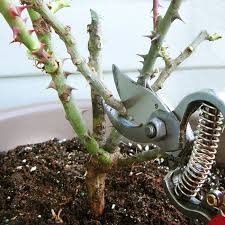
There is no need to seal the pruning cuts of your roses with Elmer's Glue, or any other product. Rose canes will seal themselves, especially if pruned during their dormant season, roughly mid-December to mid-February at a 45 degree angle. If you have added any sealant, you would be better off re-pruning those canes.
Here is a link to a UC Master Gardener guide to rose pruning, including a chart about “Rose Care by the Month”, that you might find helpful. http://ucanr.edu/sites/mgslo/files/272360.pdf
Please do not hesitate to contact us again if you have more questions. And here's to a great rose year in Contra Costa County.
Help Desk of the UC Master Gardener Program of Contra Costa County (JJM)
 |
Note: The UC Master Gardeners Program of Contra Costa's Help Desk is available year-round to answer your gardening questions. Except for a few holidays, we're open every week, Monday through Thursday for walk-ins from 9:00 am to Noon at 75 Santa Barbara Road, 2d Floor, Pleasant Hill, CA 94523, although we will be moving this spring. We will notify you if/when that occurs. We can also be reached via telephone: (925)646-6586,
Advice from the Help Desk of the
UC Master Gardener Program of Contra Costa County
Client's Request: I need some help with pruning, grafting, and transplanting young fruit trees. I'm especially interested in growing Brown Turkey Figs.
MGCC's Help Desk Response: Thank you for contacting the UC Master Gardener Program Help desk with your questions about pruning, grafting, and transplanting young fruit trees. Some of your questions were answered on the phone and others required some “digging”.
Before pruning any fruit tree, it is important to know its bearing habits, and ultimately what shape or size you would like the tree to be when it reaches maturity. You mentioned that you would like to know how and when to prune the Brown Turkey fig that you bought and planted in a pot last year. You also mentioned that you wanted to know how and when to graft a fig branch (or scion) from your son's tree onto yours.
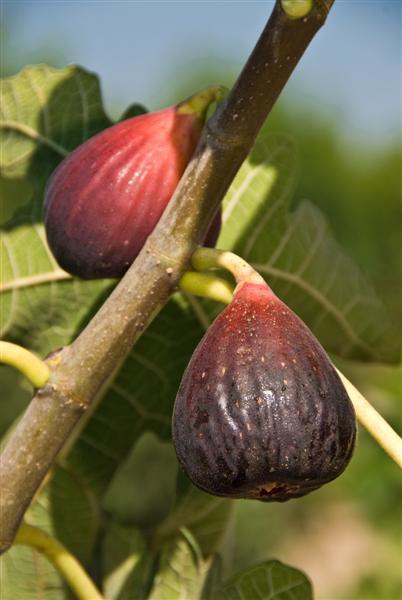
Grafting a different fig cultivar onto your tree, involves taking scion wood from a healthy tree this winter, and preserving it in a bag with moist peat moss until spring when the grating should be done. Here is a link with detailed instructions about one grafting method you might try.
https://www.gardenguides.com/125489-graft-fig-tree.html
You might also consider getting hands on experience at the Golden Gate Chapter of the California Rare Fruit Growers Scion exchange on January 20th in Berkeley. Here you may take a grafting workshop, as well as finding hundreds of varieties of budwood for grafting and cuttings to root. Please see the following website for more information about the event, as well as its location. http://www.crfg.org/chapters/golden_gate/scionex.htm. (Editor's note: Many years ago, I attended the CRFG's Scion Exchange and brought home scions of 22 different types of figs. I planted them all directly 1 each in gallon containers. They all survived, much to my surprise, since I'm not fond of figs. Fig Newton cookies yes. They eventually all were donated to dia to a much better fate than my garden.)
You also mentioned that you have a two-foot-tall volunteer fig tree in your yard that you'd like to transplant. The best time to dig up and transplant a fig is now during its winter dormancy period. You will need to measure the trunk and calculate that for every inch of trunk diameter, you will need to allow for ten inches of root ball diameter when digging. So, if your tree is 1 inch in diameter you'll have to allow for an almost 1 foot diameter of root ball. You should also dig the root ball at least 1” beyond the canopy of the tree to minimize damage of any lateral roots.
Other important facts when transplanting your fig tree include: planting it in full sun, digging the new hole no deeper than the root ball, using existing soil when back filling the hole, and avoiding planting in areas that collect water, in order to mitigate the possibility of “wet feet”, which might make the tree more susceptible to root rot. Use the following link for a comprehensive guide to fruit tree planting and care. http://homeorchard.ucdavis.edu/8048.pdf
For more all-inclusive information on how to prune, including shaping, types of pruning cuts, and much more, see the following link. http://homeorchard.ucdavis.edu/8057.pdf
This is a lot of information to take in, but I hope that you are successful in your home gardening pursuits, especially for your fig trees.
Help Desk of the UC Master Gardener Program of Contra Costa County (JJM)
Note: The UC Master Gardeners Program of Contra Costa's Help Desk is available year-round to answer your gardening questions. Except for a few holidays, we're open every week, Monday through Thursday for walk-ins from 9:00 am to Noon at 75 Santa Barbara Road, 2d Floor, Pleasant Hill, CA 94523, although we will be moving sometime soon. We will notify you if/when that occurs. We can also be reached via telephone: (925)646-6586, email: ccmg@ucanr.edu, or on the web at http://ccmg.ucanr.edu/Ask_Us/ MGCC Blogs can be found at http://ccmg.ucanr.edu/HortCoCo/ You can also subscribe to the Blog (http://ucanr.edu/blogs/CCMGBlog/)


